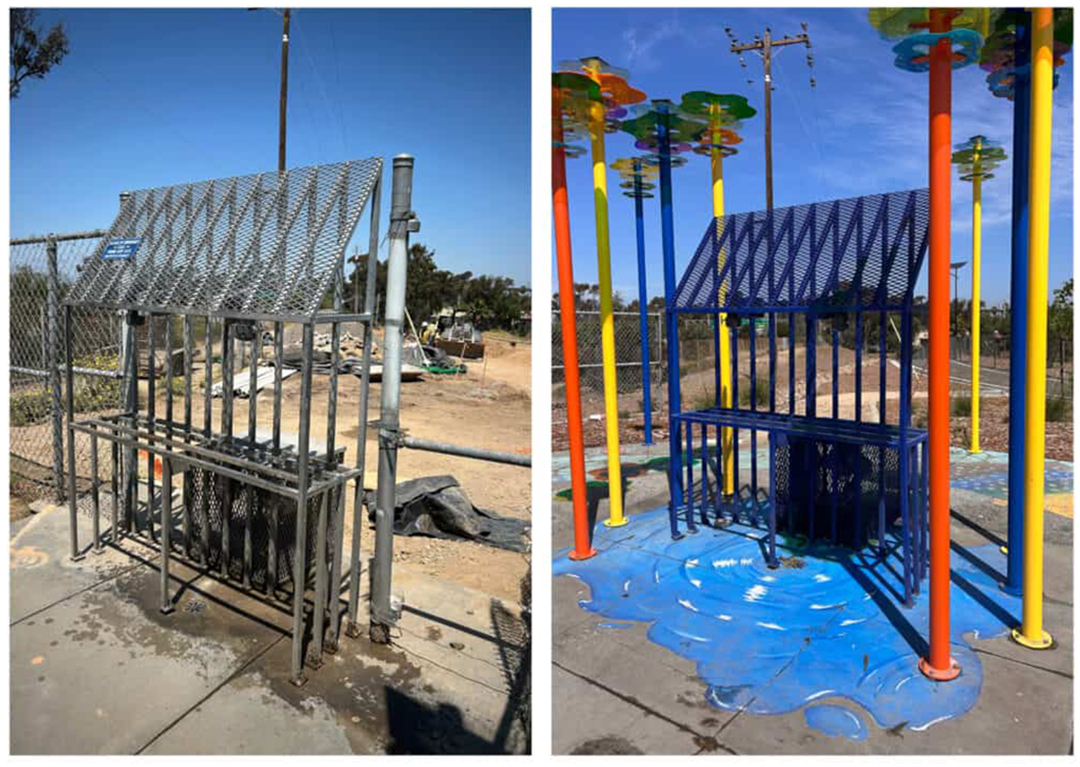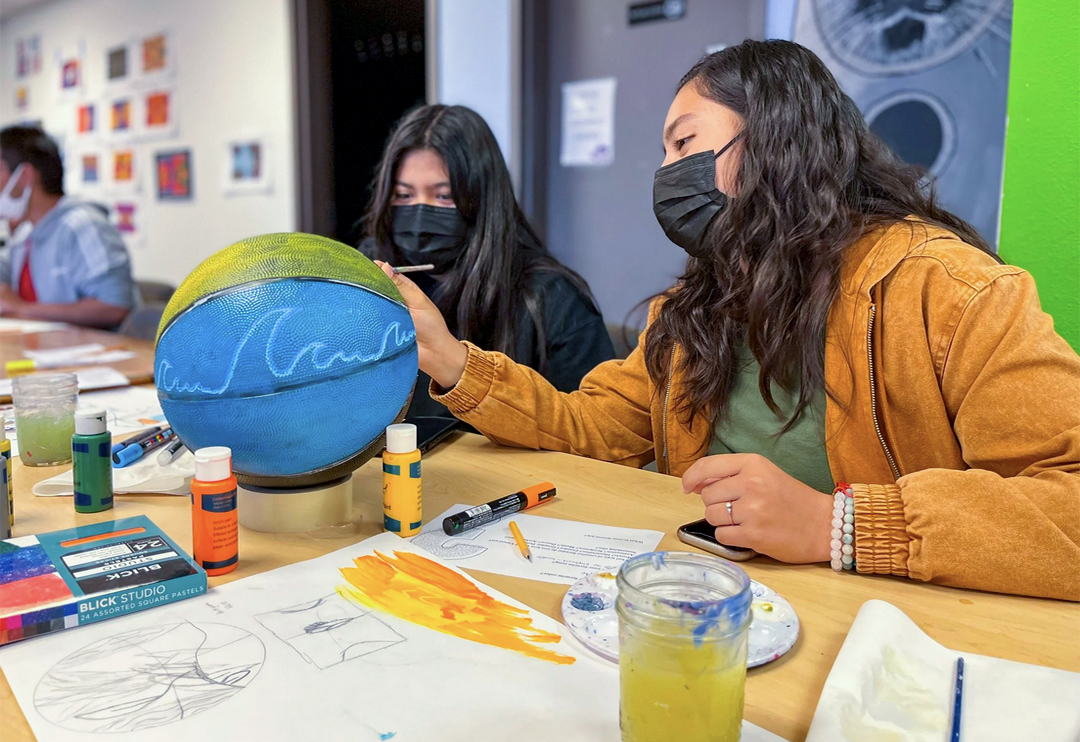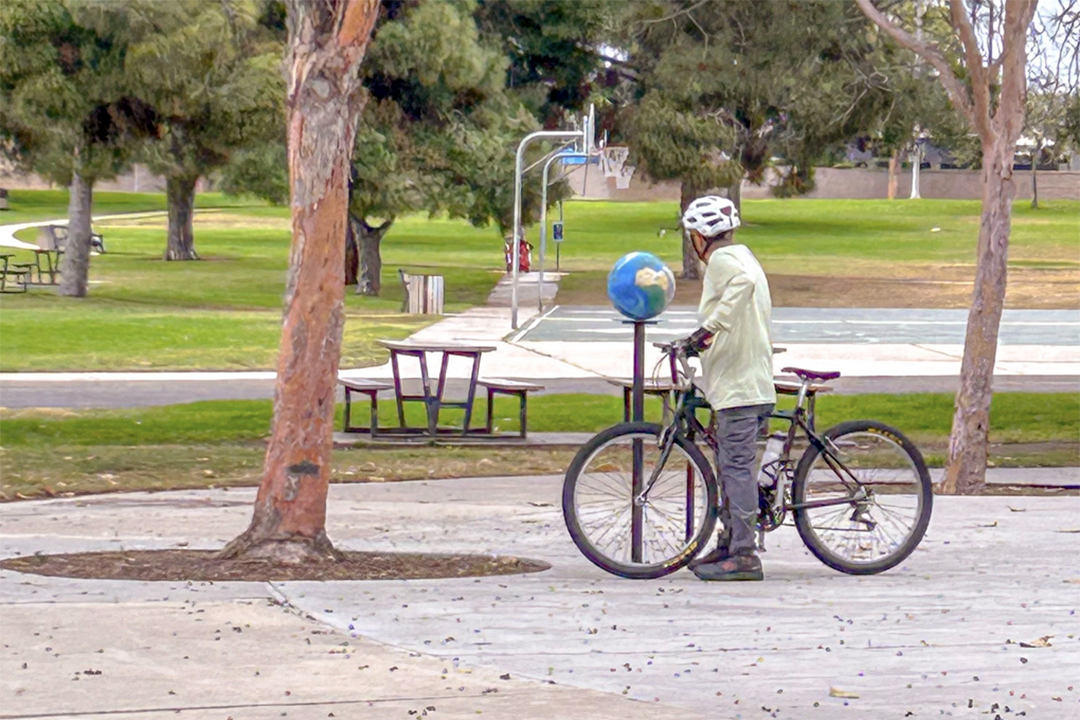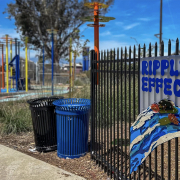Ribbon Cutting For New Public Art at Sweetwater Spigot on Sept. 10
Sweetwater Authority invites the public to a community celebration and ribbon cutting for a new public artwork project titled “Ripple Effect” at the Sweetwater Spigot, the only publicly owned well station providing potable drinking water in San Diego County.
The event takes place on Wednesday, September 10, at 9:30 a.m. in El Toyon Park in National City. The water station is located at 1925 E. 4th Street by El Toyon Park, near the Interstate 805 bridge.

The Sweetwater Spigot before and after its renovation and makeover. Photo: San Diego Architectural Foundation
Ripple Effect represents a community-based partnership between City of National City, the Sweetwater Authority, the nonprofit A Reason To Survive (ARTS), and the National City-based Design and Fabrication team at ARTIST AND EXILE dba F-GMENT, where young people co-designed, fabricated, and installed seven new pieces of community art, elevating a free water source and highlighting the importance of water conservation.
The City of National City obtained funding for the public art enhancement to beautify the water station area through Caltrans’ Clean California Grant Fund.
Ripple Effect is nominated this year in the Public Art category in the annual San Diego Architectural Foundation “Orchids & Onions” awards. SDAF recognizes projects in the built environment with an impact on the San Diego region, whether positive or negative.
ARTS Interns Create New Public Artwork at Sweetwater Spigot

A Reason To Survive (ARTS) intern Addie E. works on the artwork titled “Mother Nature’s Conversion of Conservation” now installed at the Sweetwater Spigot. Photo: A Reason To Survive
Five interns from ARTS invested 300 hours of work through its apprenticeship training program. ARTS provides arts education focused on design thinking, cultural equity, and healing-centered engagement to youth in the South County communities of San Diego County.
ARTS Youth Intern Addie E. worked on “Mother Nature’s Conversion of Conservation,” one of the seven artworks. She said of the experience, “I think it’s made me quite confident. I feel very happy that I’ve been able to excel and that I’ve been able to have an impact in the community. I mean, this is already brightening people’s days! It’s only been here for a short while, but there’s just been so much positive feedback.”

The finished artwork “Mother Nature’s Conversion of Conservation” is already drawing attention from visitors. Photo: A Reason To Survive
Groundwater Sources Remain Key Water Supply
The free water station is operated by the Sweetwater Authority and is open to the public for drawing water from a local well.
The station draws water from the San Diego Formation. The San Diego Formation is a geological feature primarily composed of marine sandstone and conglomerate sediments. It was formed roughly 1.5 million to 3.5 million years ago. This thick wedge of sediment acts as an important aquifer in the region, with ample storage capacity in the Lower and Middle Sweetwater Basins.
This aquifer is one of two groundwater sources used by the Sweetwater Authority. It draws groundwater from deep wells located in the San Diego Formation to help supply water to its customers. It is naturally filtered, then disinfected, and tested for safety before being offered to the public.
Sweetwater Authority customers receive an average of 70% of their water from local water supplies, including the Sweetwater River and the San Diego Groundwater Formation. The remainder is obtained from imported water sources.

The public is invited to attend the ribbon-cutting ceremony on Sept. 10 for “Ripple Effect” at the Sweetwater Spigot. Photo: Sweetwater Authority
Any member of the public can access the well water directly from the spigots. The Sweetwater Authority provides water free of charge as part of a commitment it made when it acquired the water wells from the city upon its formation in 1977.



